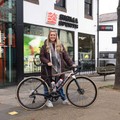Latest Articles
-

The Sigma Sports Cafe Ride - Matteo Trentin
Matt Stephens joins former European Road Champion and Tudor Pro Cycling rider Matteo Trentin in Monaco for an episode of the Sigma Sports Café Ride w...
-

Introducing Dame Laura Kenny - A Sigma Sports Ambassador
It’s official. Dame Laura Kenny is a Sigma Sports ambassador. We are truly honoured and incredibly excited to be working with Great Britain’s most...
-

Announcing Sigma Sports new store in Letchworth
We are pleased to announce the opening of our third multisports store this spring. Located in Letchworth Garden City, North Hertfordshire.
-

Best Garmin For Triathlon
Looking for the best Garmin multisport watch for triathlon? This guide covers top Garmin watches for triathletes in 2025 to help you find the right on...




